
The Bottom Line
Introduction, Specifications, and Pricing
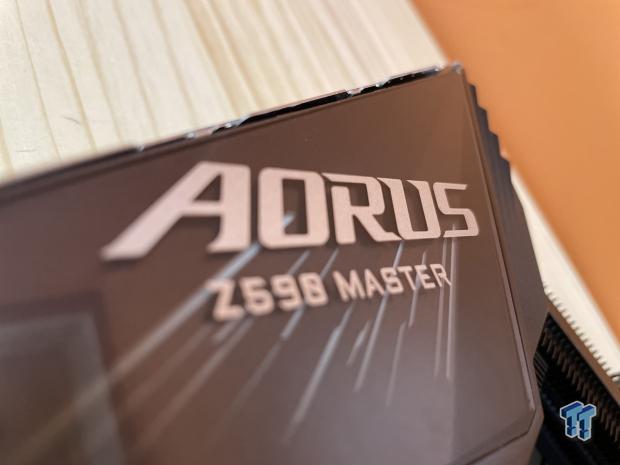
AORUS Master has been the mid-range offering for the past three generations of Intel Z Series chipsets. Sitting in the middle of the lineup, the Master has the Xtreme and WaterForce models above it while it sits above the AORUS Ultra and AORUS Elite.
For Z590, GIGABYTE is focusing on several key features for the Master, the first being the Extreme Power Design using 90A SPS for each phase along with high current MOSFETS and Tantalum Polymer Capacitors. This allows the AORUS Master to run with lower temperatures and improved transient response to changes in load.
Another significant feature of the Z590 AORUS Master is improved memory performance and compatibility with DDR4 5000+ kits that are being released into the market for Rocket Lake S CPUs. This rolls us into the PCIe 4.0 hardware design with tighter tolerances than PCIe 3.0; this means less signal loss and more stability on ports and slots designed for Gen4 devices.
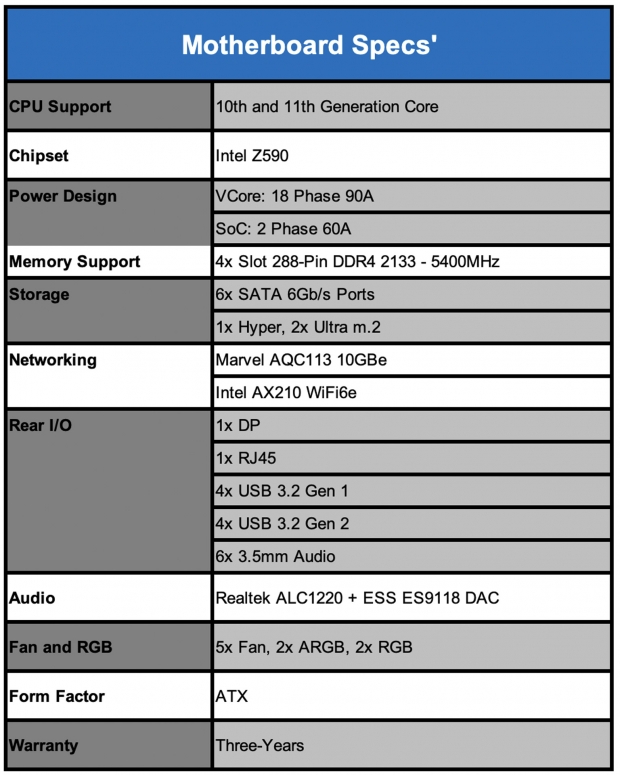
Digging into this board, we have compatibility with both 10th and 11th Gen processors from Intel supporting Socket LGA1200. Memory compatibility includes JEDEC 3200MHz and XMP up to 5400MHz on 4x slots.
From here, we go to storage, where we have three m.2 slots, one Hyper M.2 and two Ultra M.2and moving to audio, we have the ALC1220-VB codec from Realtek that supports DTS:X Ultra along with an added ESS ES9118 DAC.
Connectivity starts with 10Gbe LAN offered by the AQC107 chip from Marvel; this is paired up with the Intel AX210 for Wi-Fi 6e support and BT 5.2. USB connectivity gives this board both Gen 1 and Gen 2 support on the rear I/O; four ports colored blue for Gen 1 and another four in red for Gen2.
Pricing
The GIGABYTE Z590 AORUS Master carries an MSRP of $409.99 with a three-year warranty.

Packaging, Accessories, and Overview
Packaging and Accessories
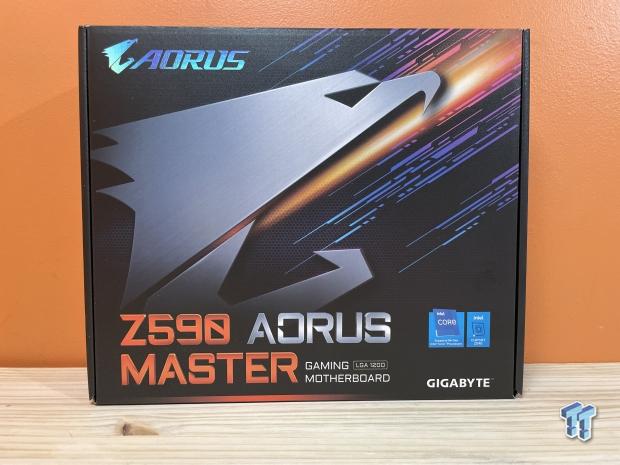
Packaging for the AORUS Master includes the AOrus Logo and chipset/CPU support bottom right.
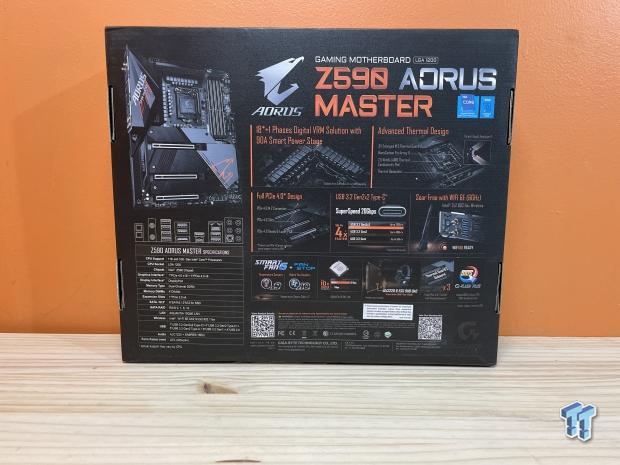
On the back, we have board specs on the left with high-level features on the right.
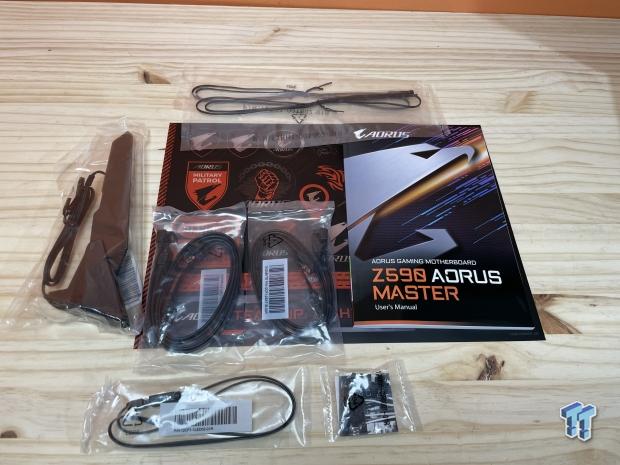
Included with the motherboard, you will find the Wi-Fi antenna, SATA cable, along with various extension cables and reading materials.
GIGABYTE Z590 AORUS Master Overview
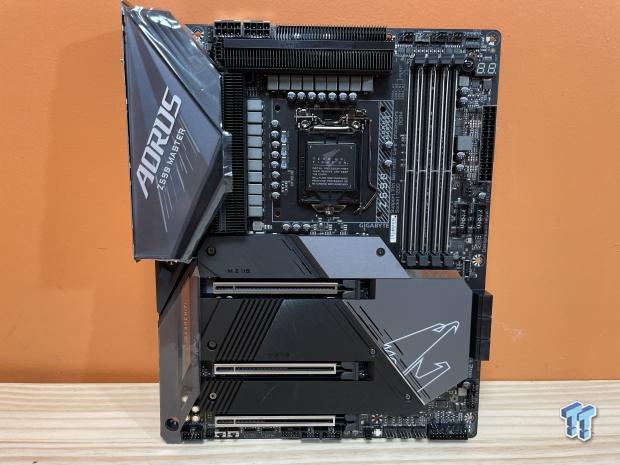
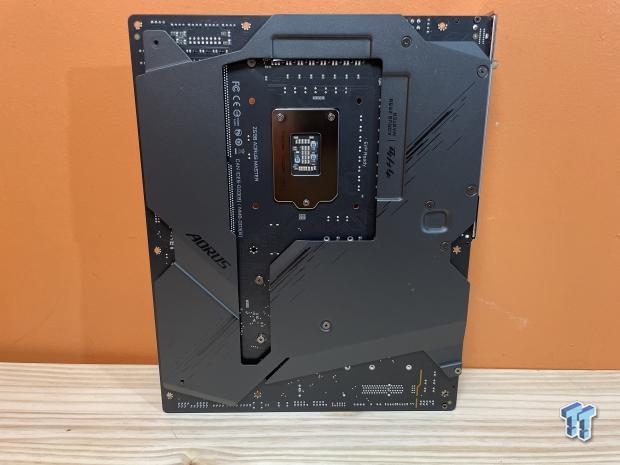
AORUS Master has an overall neutral theme with black and grey heat sinks. The VRM enjoys a nice fin stack for dissipating heat, and the three x16 slots are heavily shielded, as are the DIMM slots on the right. The back of the board does have a big aluminum shield with AORUS branding.
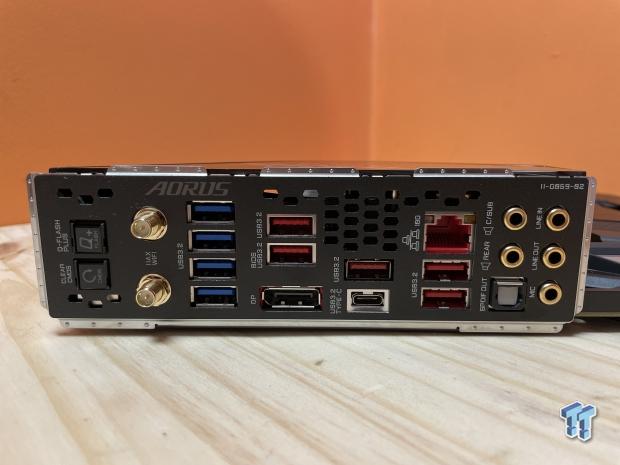
Rear I/O is stacked with USB 3.2 support. Gen 1 port is colored blue, while Gen 2 is red. We also have antenna connections on the left and DP-centered, far-right 3.5mm audio ports.
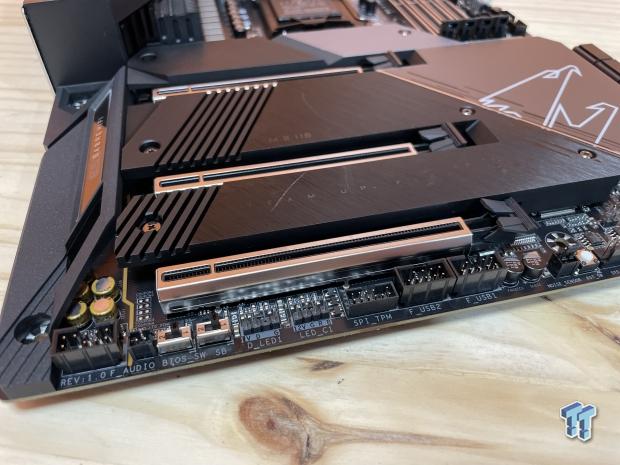
Along the bottom of the board, we have the dual BIOS switch along with front panel audio. Further right, we have internal USB headers.
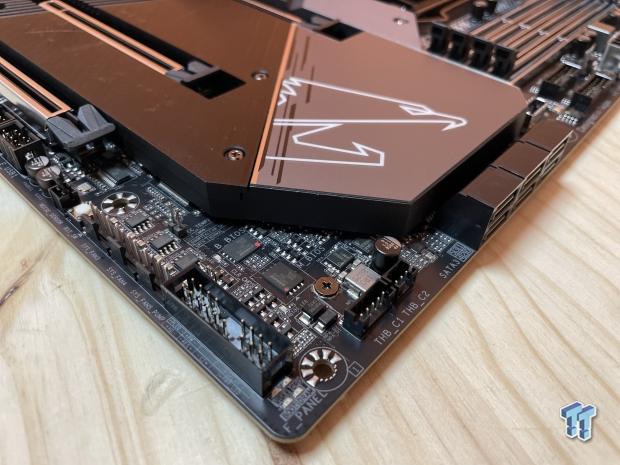
On the far end, we have the front panel power and reset along with two Thunderbolt headers for AICs.
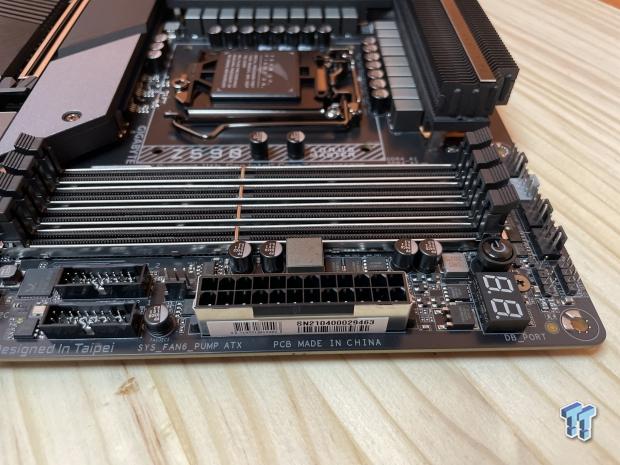
The top of the board gives us all four RAM slots, shielded-two USB 3.2 Gen 1 headers just to the left of the 24pin power connection.
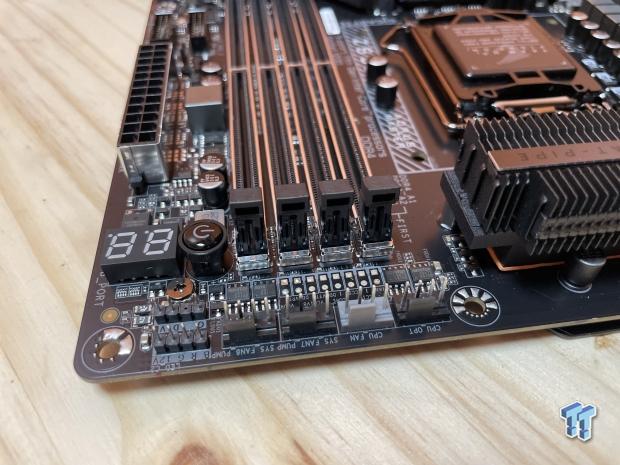
Across the top, we have ARGB and RGB headers along with fan connections and debug LED.
PCB and Circuit Analysis
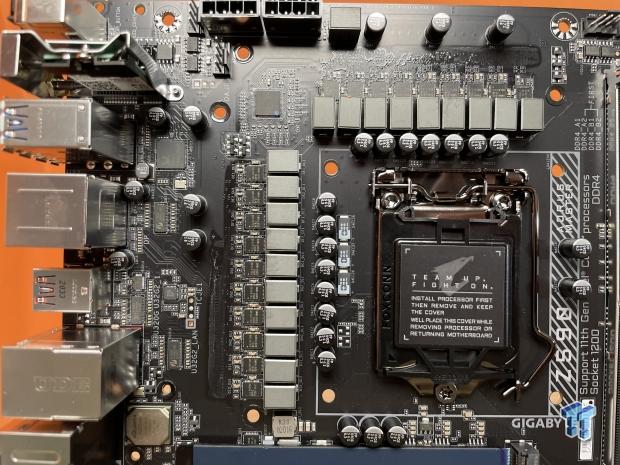
Power design is stacked on the AORUS Master, with 18 stages for vCore all Intersil 99390 90A SPS stages and one SIC649 60A for SoC. Also worthy of note, to the bottom left, you will see the AQC107 10Gbe LAN.
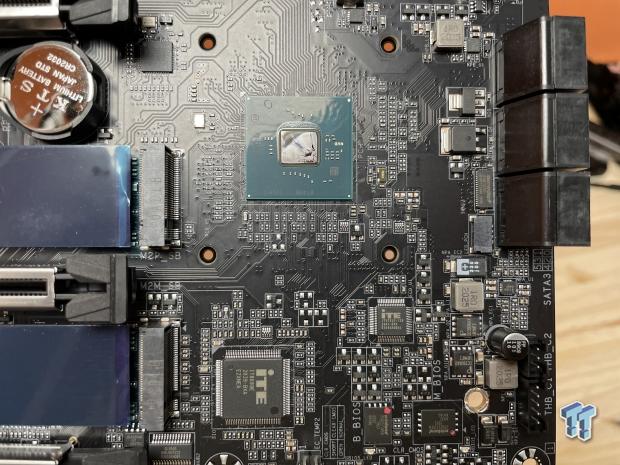
Chipset is our focus above, but we do have the ITE Super I/O below.
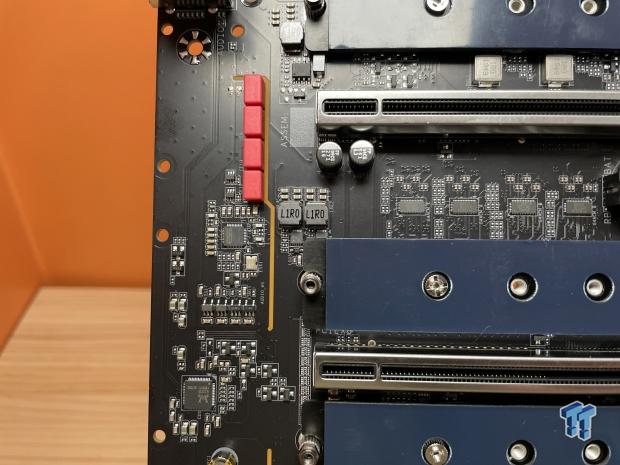
Realtek ALC1220 can be found at the bottom left and above the ESS 9118 DAC and power filters.
UEFI, Software and Test System
UEFI
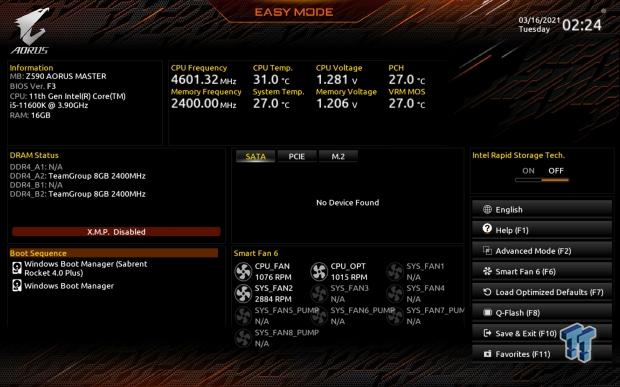
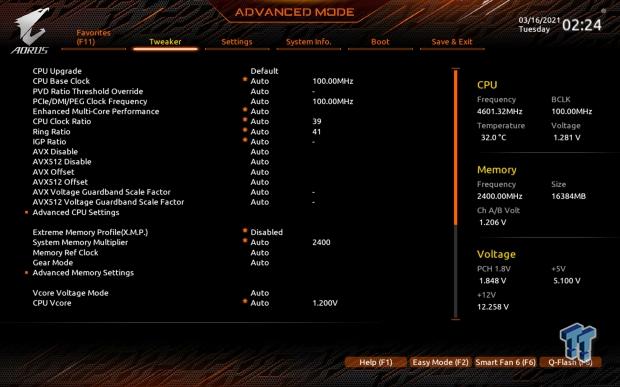
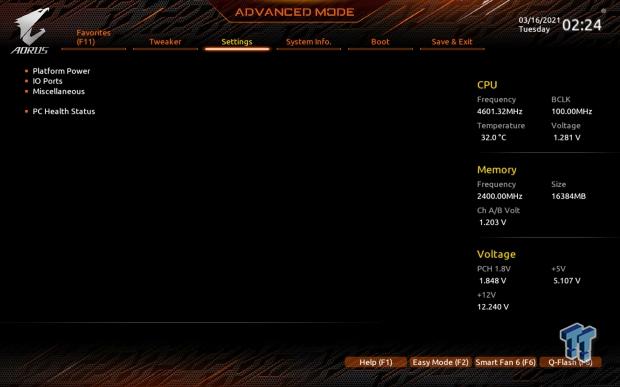
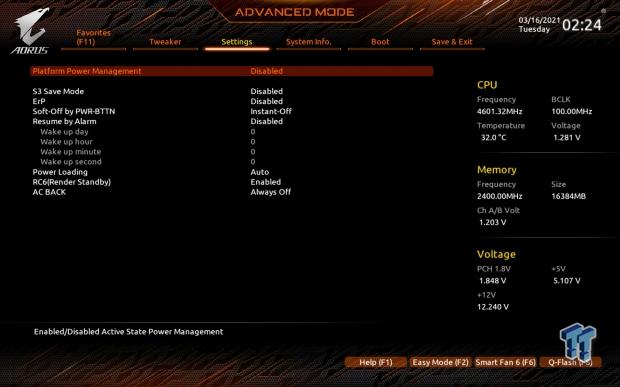
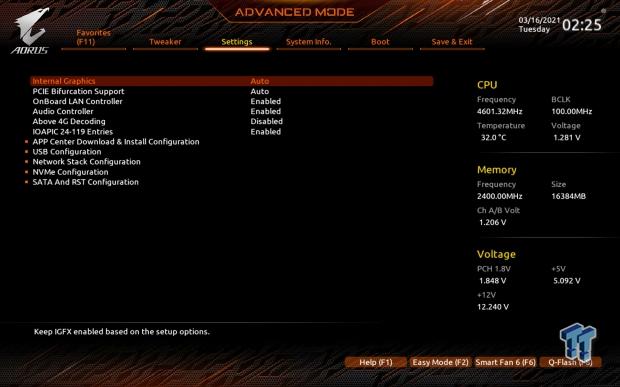
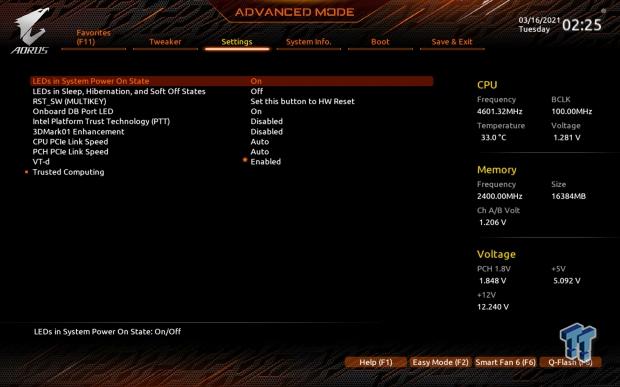
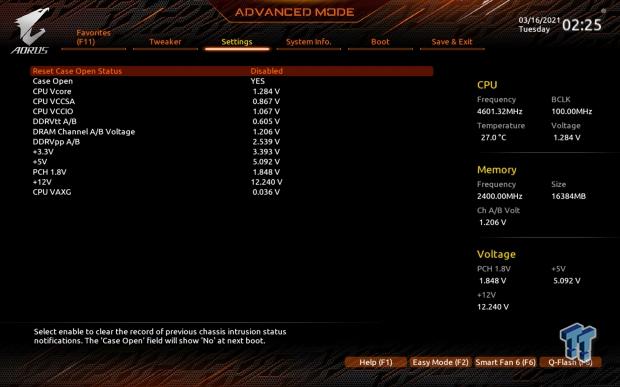
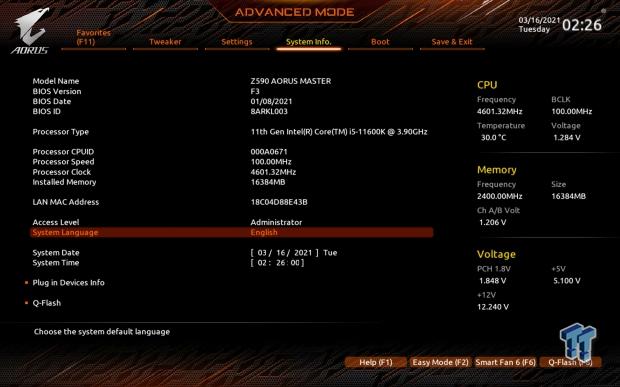
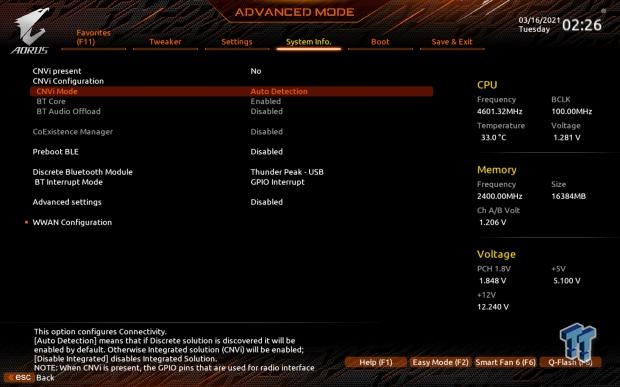
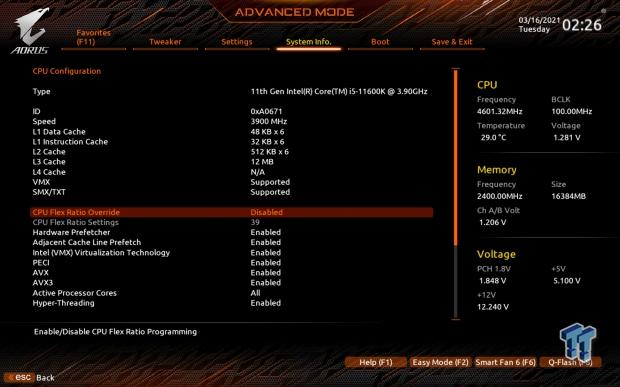
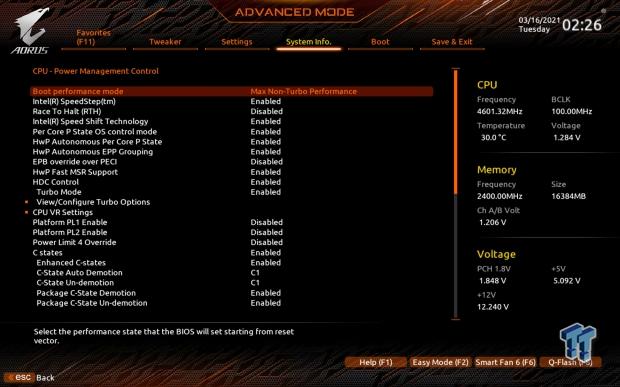
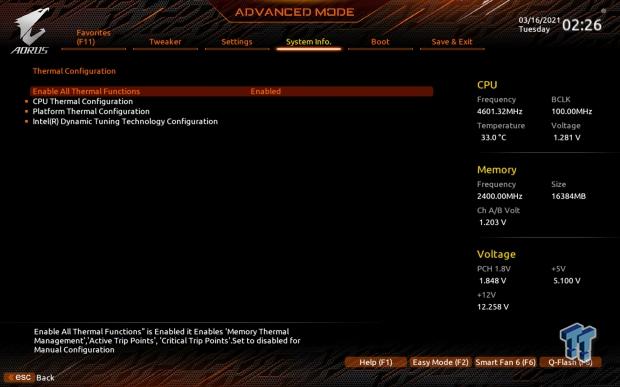
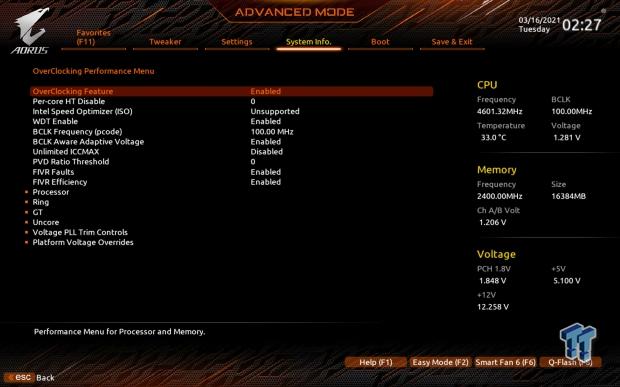
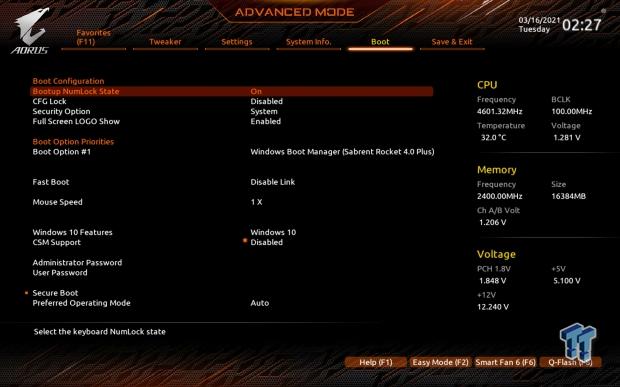
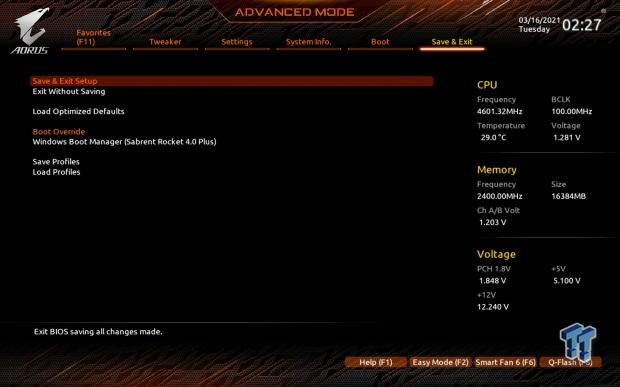
EFI on the AORUS Master includes the AORUS orange and black colorway; Easy Mode offers information about the hardware installed across the top with current frequencies in the middle. The bottom left offers XMP support, along with the boot sequence down below.
F7 moves us to advanced mode with a breakdown between several tabs; the first is Tweaker which gives you basic controls for overclocking CPU and memory, while the settings tab is split between platform power settings and IO Ports. Within IO Ports, the breakdown includes audio, LAN, and bifurcation support. Further down, we have menu items for USB, SATA, and NVMe.
Motherboard Software
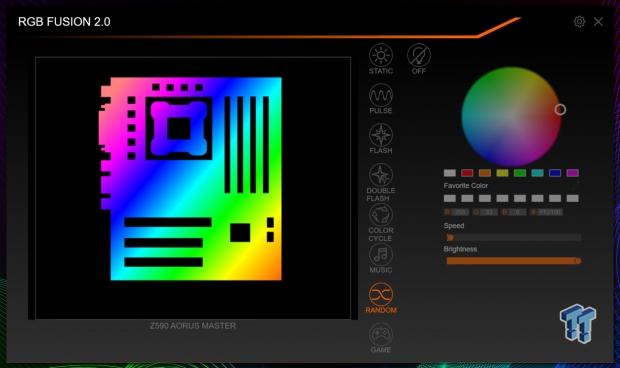
RGB Fusion is our first piece of software; this allows you to control motherboard lightning along with any connected RGB strips.
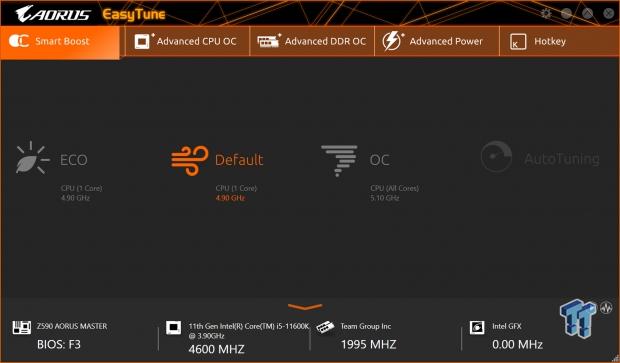
Next, we move to EasyTune, overclocking software for AORUS and GIGABYTE platforms. This software does offer several preset modes.
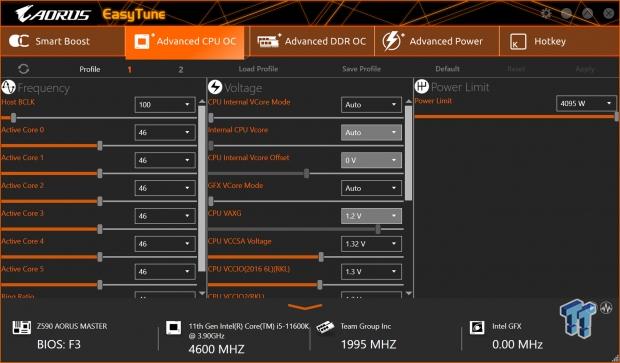
If we move to Advanced OC, we can change frequency, voltage, and power limits.
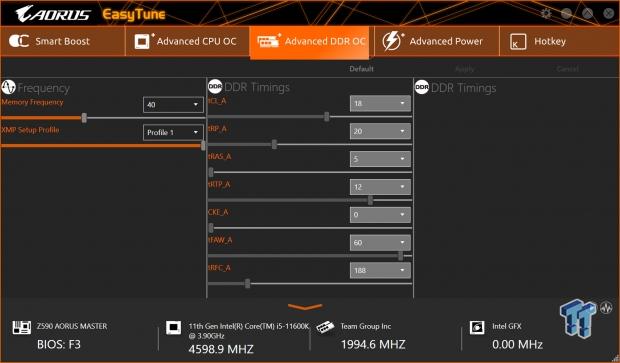
DDR OC offers options for you to change frequency and timings on-the-fly.
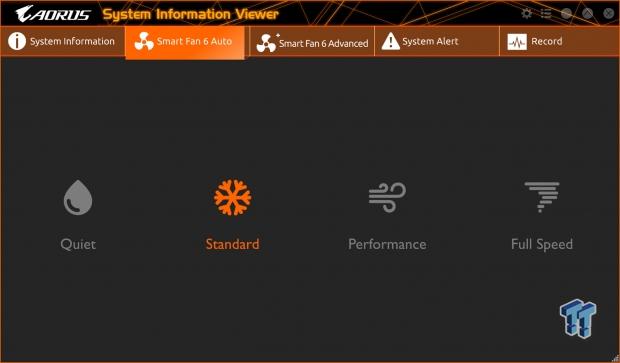
Fan control does have as well; these include standard, performance, and full speed.
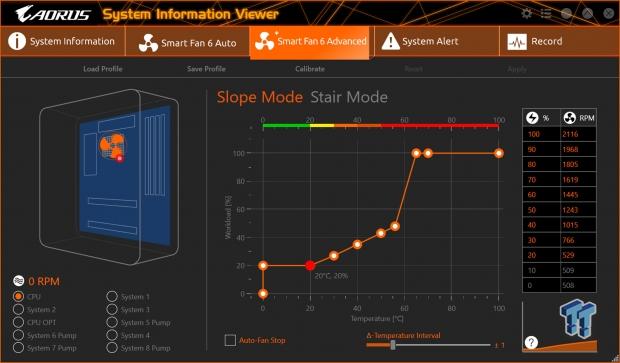
Further, you can set custom fan profiles for the entire motherboard.
Motherboard Testing Supporters
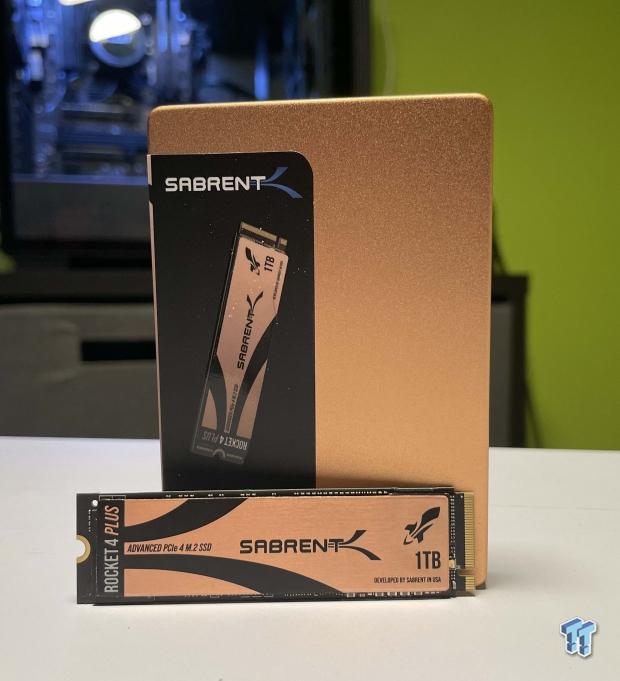
Sabrent supports our storage testing with the Rocket 4 Plus.
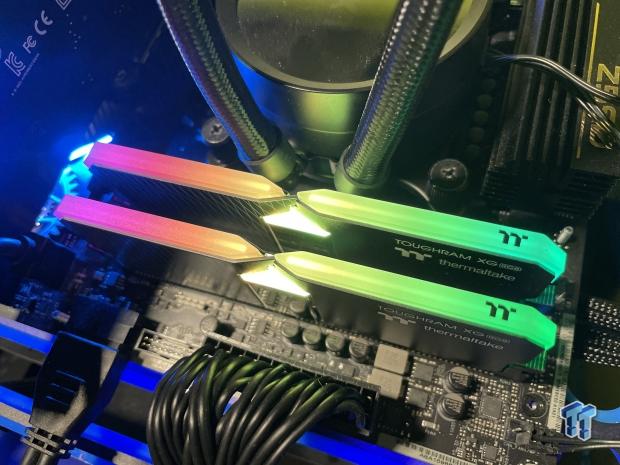
Thermaltake has come onboard with their Toughram XG for all Z590 reviews.
TweakTown Intel Motherboard Test System
- CPU: Intel Core i7 11700K
- GPU: ASUS TUF RTX 3080 10GB
- RAM: Thermaltake Toughram XG 2x8G DDR4 4000 (buy from Amazon)
- OS Storage: Sabrent Rocket 4 Plus 1TB (buy from Amazon)
- Power Supply: Corsair RM1000X (buy from Amazon)
- OS: Microsoft Windows 10 (buy from Amazon)
Cinebench, Realbench and AIDA64
Cinebench R23
Cinebench is a long-standing render benchmark that has been heavily relied upon by both Intel and AMD to showcase their newest platforms during unveils. The benchmark has two tests, a single-core workload that will utilize one thread or 1T. There is also a multi-threaded test that uses all threads or nT of a tested CPU.
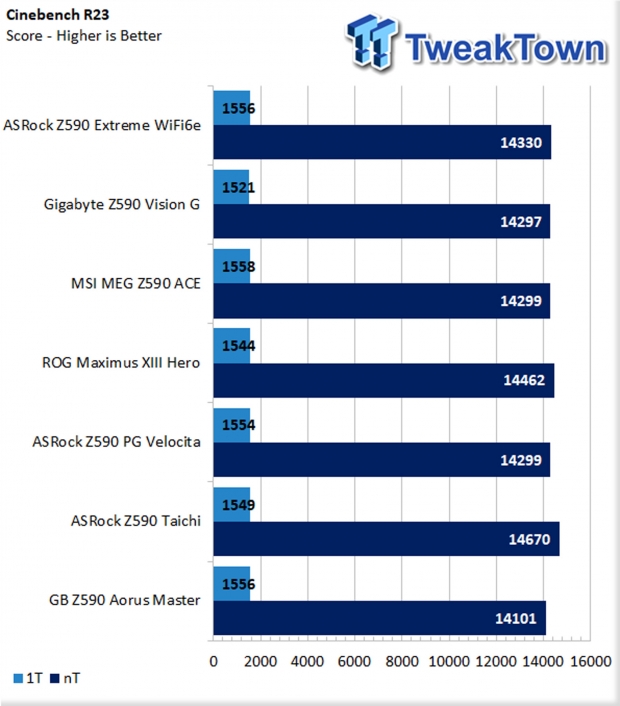
AORUS Master did quite well in a single thread, 1556 in R23. Multi-thread results reached 14101.
Realbench
Realbench uses both video and photo workloads to benchmark your CPU. We use all three workloads in this scenario.
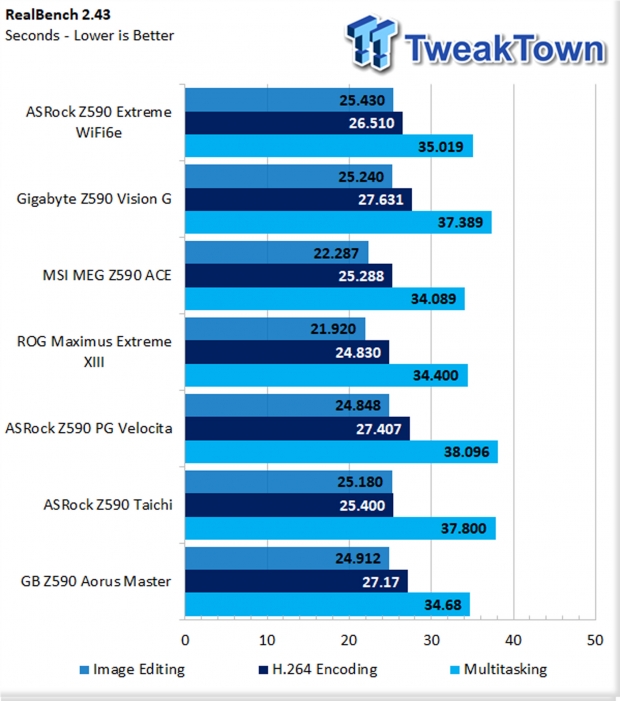
Realbench offers 24.9 seconds in Image Editing, 27.1 seconds in H.264 Encoding, and 34 seconds in multi-tasking.
AIDA64 Memory
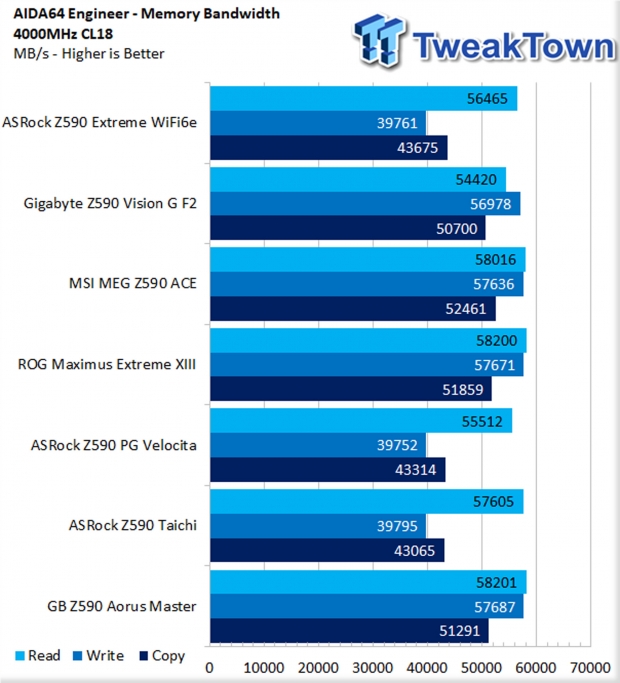
Memory bandwidth topped 58K read, 57K write, and 51K for copy.
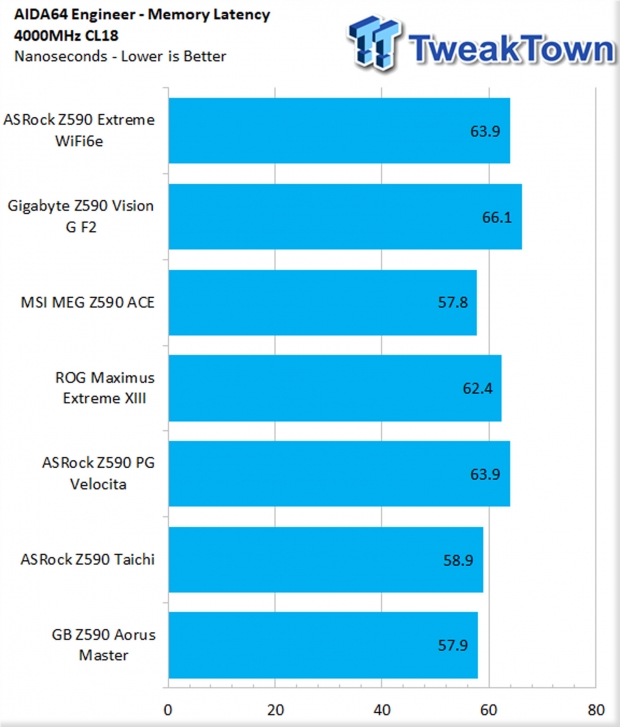
Memory Latency came in at 57.9 seconds.
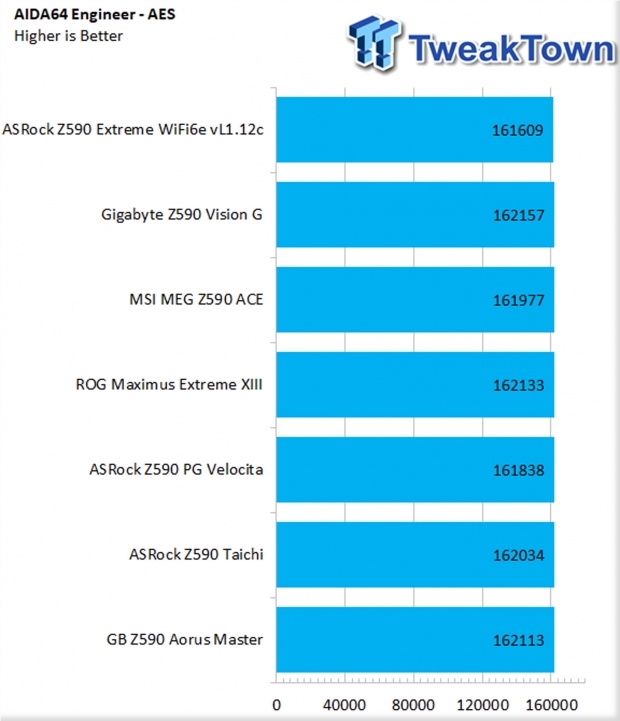
In AES, results come in at 162,113 for AORUS Master.
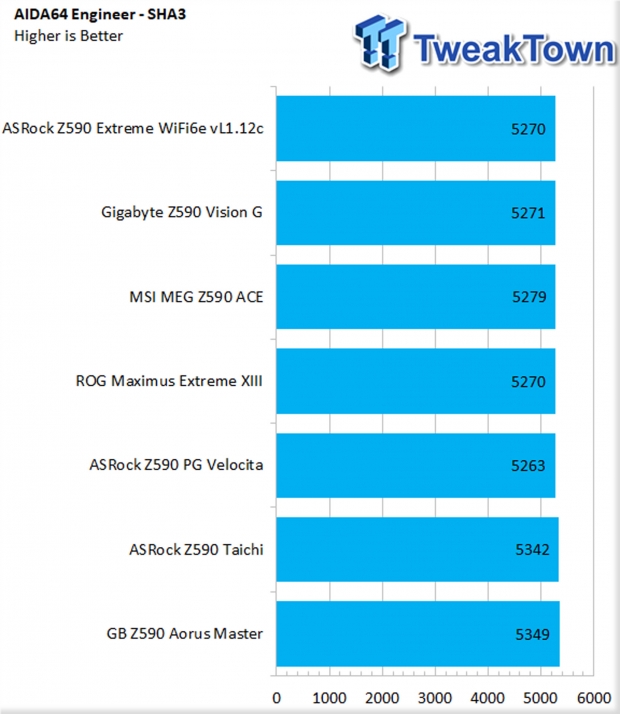
SHA3 showed 5349, right in line with other platforms.
PCMark10 and PugetSystems Benchmarks
PCMark 10
PCMark is a benchmark from UL and tests various workload types to represent typical workloads for a PC. Everything from video conferencing, image import, and editing, along with 3D rendering, are tested.
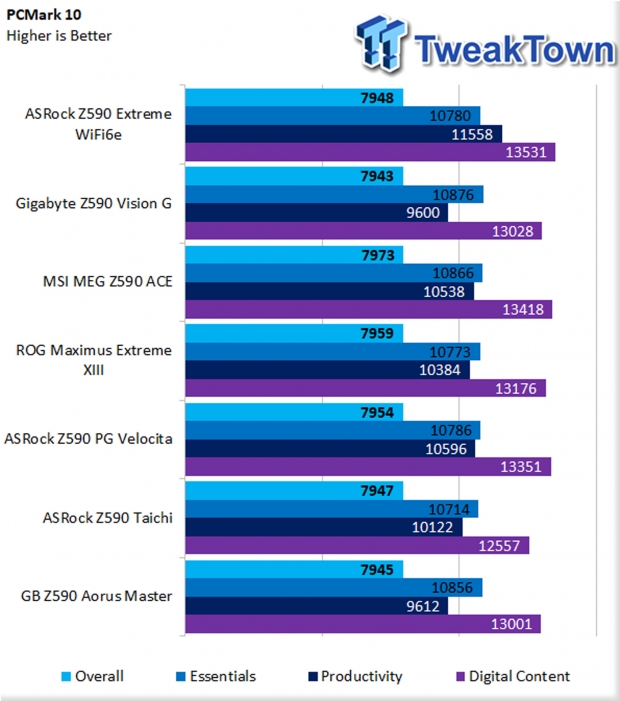
PCMark testing gave us a score of 7945 overall. Peak results come in essentials and digital content.
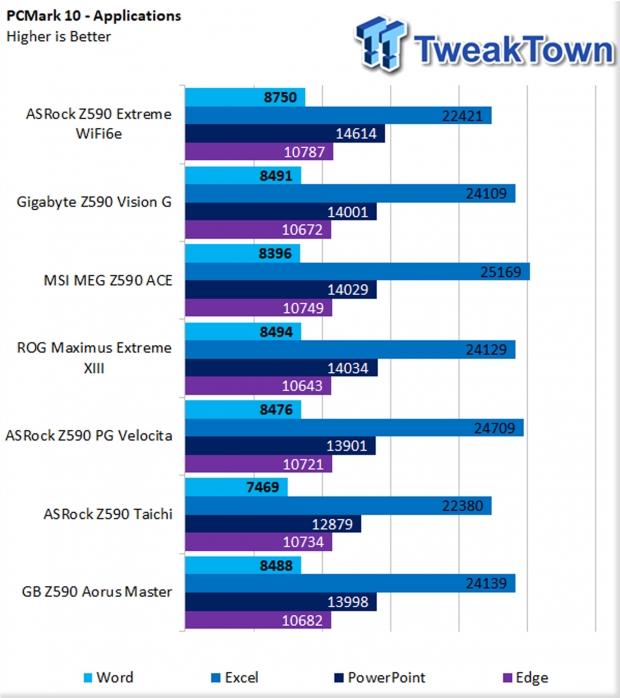
Applications testing touched 24K in Excel at peak, 13998 for PowerPoint, and 10682 for Edge.
PugetBench
PugetBench comes from the fantastic people over at Puget Systems that have done countless hours and years benchmarking hardware. For our testing, we will utilize their Davinci Resolve, Photoshop, and Lightroom benchmarks, you can look into them more here
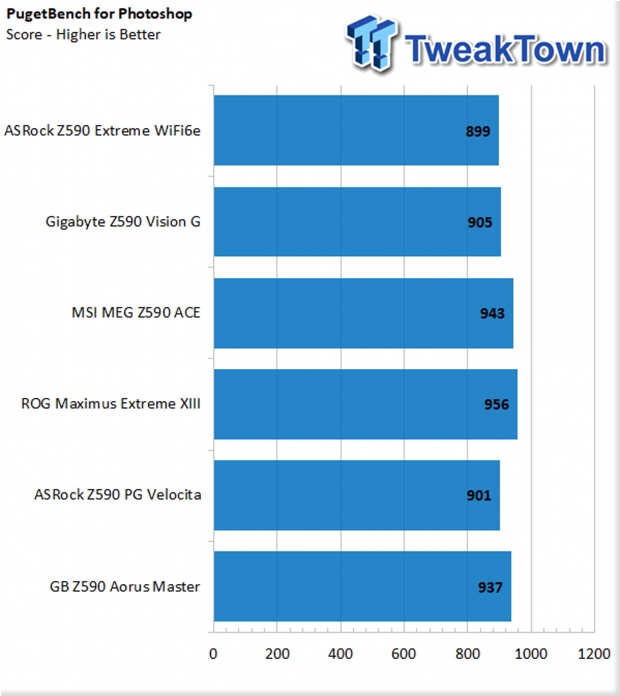
Puget for Photoshop ended with a score of 937.
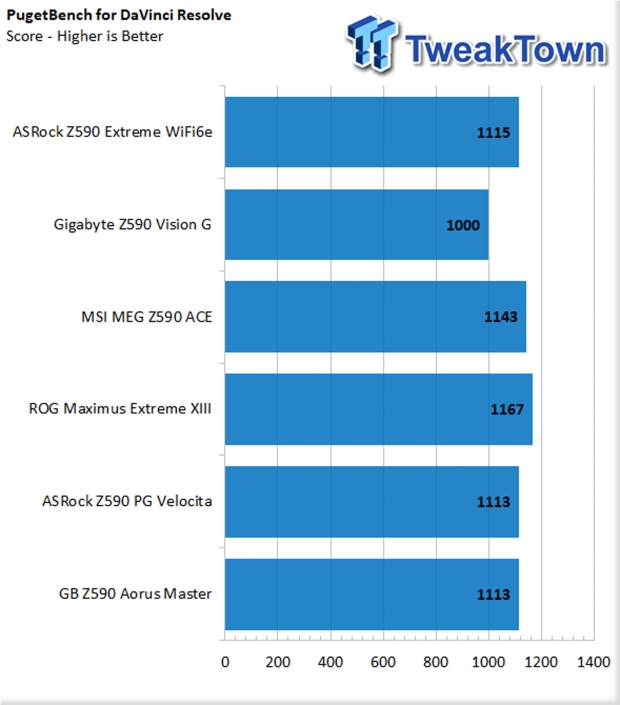
Davinci Resolve gave us a score of 1113.
Microsoft Flight Simulator
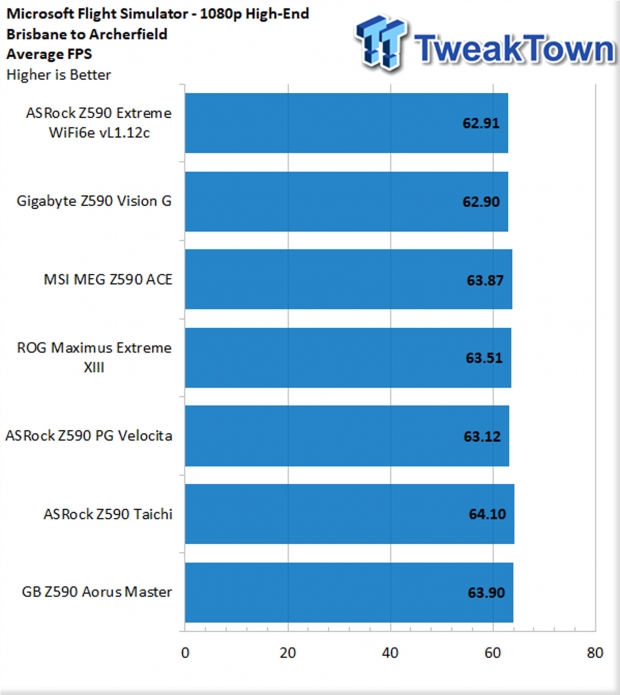
Comparing the AORUS Master to the rest of our charts, we are right on par near 64FPS in testing.
System I/O Benchmarks
Storage with CrystalDiskMark
Storage tests are all handled by our Sabrent Rocket Plus NVMe 4.0 SSD. Secondary storage tests are conducted with our WD_Black P50 SSD.
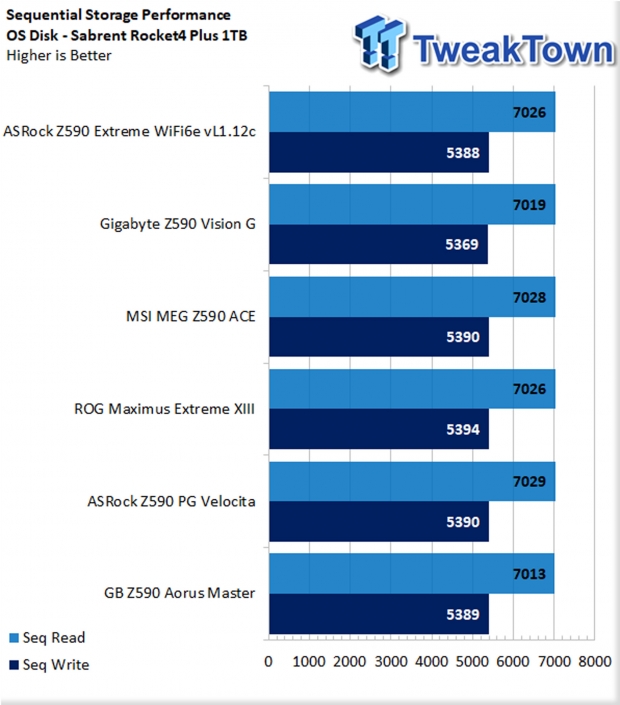
Storage testing showed 7013 MB/s reads and 5389 MB/s write.
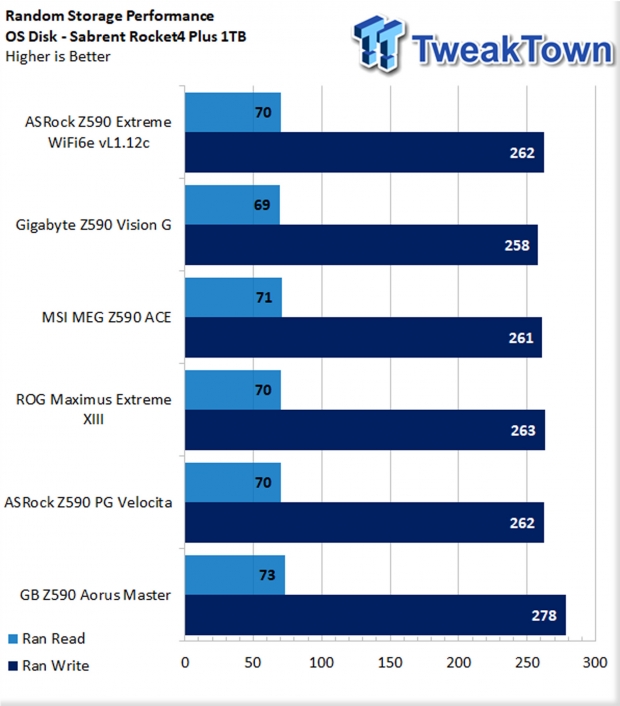
Q1 Random showed 73 MB/s reads and 278 MB/s write.
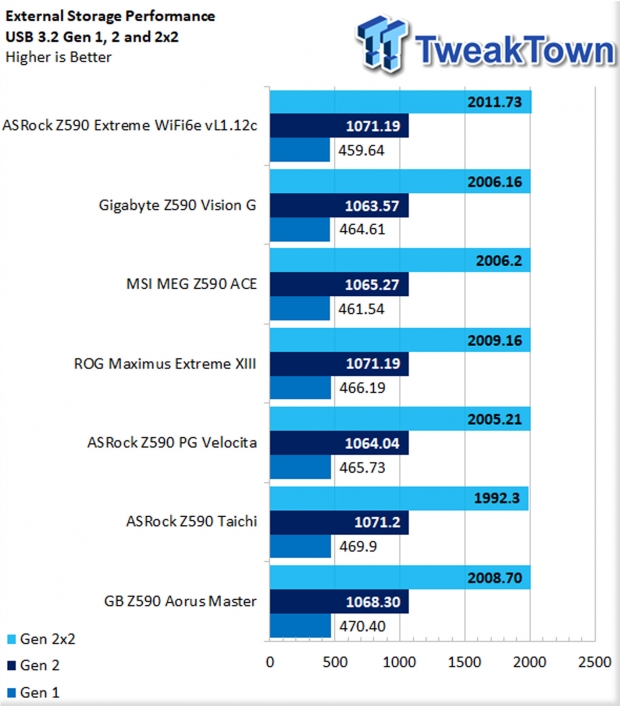
In our external storage testing, we see 470 MB/s from Gen 1, 1068 MB/s from Gen 2, and 2008 MB/s from Gen 2x2.
Audio - Dynamic Range
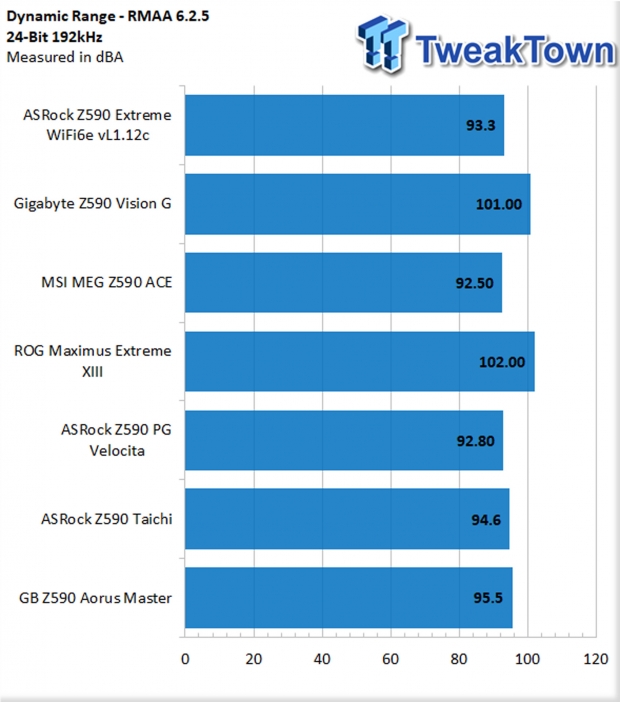
Testing audio, we set up RMAA with a 3.5mm cable from the line-in to speaker out (green to blue) and set both to 24Bit 192KHz. AORUS Master gave us 95.5 dBA.
Networking

With networking, we have 10Gbe and WiFi6e. WiFi6 tested at 1214.56, and the 10Gbe gave us 2341 on our 2.5Gbe test setup.
Power, Thermals and Final Thoughts
Power Consumption
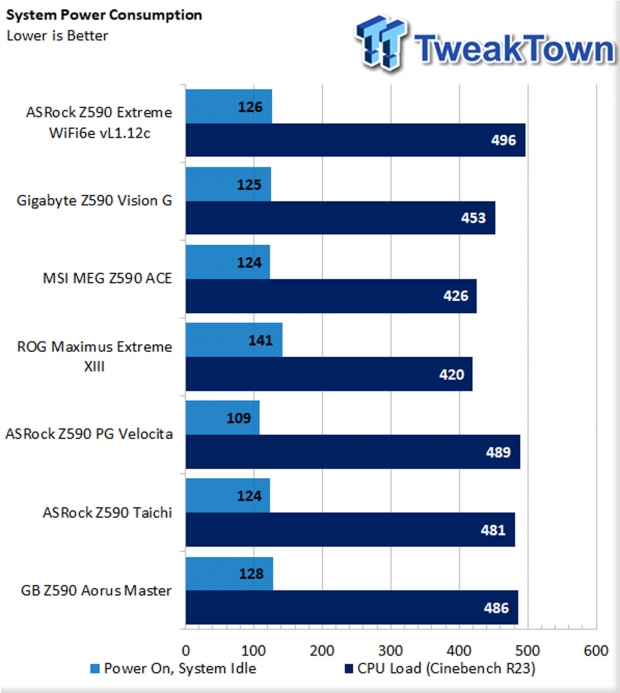
Wrapping up testing, power consumption saw a low of 128w at idle and a peak of 486 watts under CPU load.
Thermals
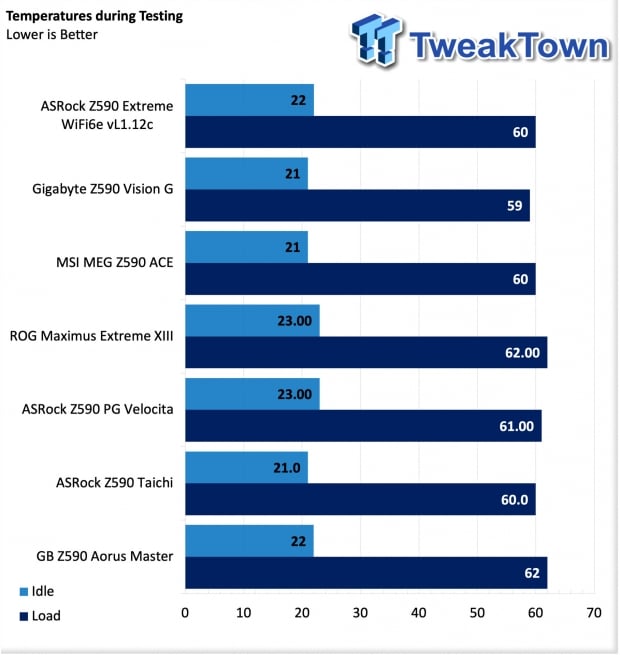
Thermals were on par at 22c idle and peak of 62c during testing.
Final Thoughts
AORUS Master is an enthusiast board that caters to the needs of any Gamer; it will offer the flexibility needed for mid-range and big gaming builds with top-of-the-line parts and has a fantastic power design that can push the power-hungry 11900K. Board quality is legit. The heat sink design is an authentic finned design allowing for high-efficiency cooling of the VRM stack. The board armor that handles m.2 and chipset cooling is subtle in a color that won't clash with any themed builds.
Connectivity options on this platform are high-end, but it does lack integrated Thunderbolt. AORUS makes up for this with 10Gbe supporting multi-gig so that it will operate all the way down to 100Mbps. This board has more USB 3.2 connections than most so you shouldn't need any hubs; on the rear I/O, were looking at four Gen 1 and five Gen 2; additionally, the rear USB-C supports up to Gen2x2 for 20Gbps support.
Overall, the AORUS Master is a high-end platform, and with the board, in hand, you can really tell the level of quality. With the cost of components going up and shortages being quite real, the MSRP of $409 for this motherboard seems high at first, but AORUS is delivering one hell of a platform for that money!
What We Like
Socket Compatibility:> In-Socket upgrade for 10th Gen users.
USB 3.2: Tons of USB 3.2 connectivity on this board.
Networking: With 10Gbe and WiFi6e onboard, this board is stacked for connectivity.
What Could Be Better
Price: At $409 this board isn't cheap.
Thunderbolt 4: No integrated Thunderbolt 4, need AIC.

Performance |
95% |
Quality |
95% |
Features |
90% |
Value |
90% |
Overall |
93% |
The Z590 AORUS Master is a fantastic motherboard that offers tremendous build quality and performance to gamers.

Related Tags

